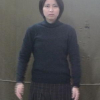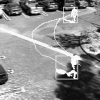179 search results - page 20 / 36 » Structure recognition on sequences with a neuro-fuzzy-system |
ICPR
2008
IEEE
14 years 9 months ago
2008
IEEE
Sign language is used for communicating to people with hearing difficulties. Recogntion of a sign language image sequence is challenging because of the variety of hand shapes and ...
ICAPR
2005
Springer
14 years 2 months ago
2005
Springer
There is need for more formal specification of recognition tasks. Currently, it is common to use labeled training samples to illustrate the task to be performed. The mathematical ...
JCB
2006
13 years 8 months ago
2006
Protein fold recognition is an important step towards understanding protein three-dimensional structures and their functions. A conditional graphical model, i.e., segmentation con...
ECCV
2006
Springer
14 years 10 months ago
2006
Springer
Abstract. In spite of over two decades of intense research, illumination and pose invariance remain prohibitively challenging aspects of face recognition for most practical applica...
CVPR
2000
IEEE
14 years 10 months ago
2000
IEEE
Towards the goal of realizing a generic automatichuman activity recognition system, a new formalism is proposed. Activities are described by a chained hierarchical representation ...


